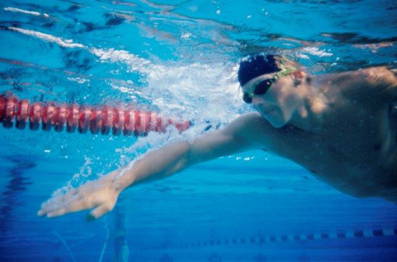 Cleanzine: your weekly cleaning and hygiene industry newsletter 18th April 2024 Issue no. 1110
Cleanzine: your weekly cleaning and hygiene industry newsletter 18th April 2024 Issue no. 1110
Your industry news - first
The original and best - for over 20 years!
We strongly recommend viewing Cleanzine full size in your web browser. Click our masthead above to visit our website version.
An answer to the perennial question: Is it safe to go in the pool?
 Sanitary-minded pool-goers who preach "no urinating in the pool," despite ordinary and Olympic swimmers admitting to the practice, now have scientific evidence to back up their concern.
Sanitary-minded pool-goers who preach "no urinating in the pool," despite ordinary and Olympic swimmers admitting to the practice, now have scientific evidence to back up their concern.
Researchers are reporting that when mixed, urine and chlorine can form substances that can cause potential health problems. Their study, 'Volatile Disinfection Byproducts Resulting from Chlorination of Uric Acid: Implications for Swimming Pools' appears in ACS' journal Environmental Science & Technology.
 Jing Li, Ernest Blatchley, III, and colleagues note that adding chlorine to pool water is the most common way to kill disease-causing microbes and prevent swimmers from getting sick. But as people swim, splash, play - and pee - in the pool, chlorine mixes with sweat and urine and makes other substances.
Jing Li, Ernest Blatchley, III, and colleagues note that adding chlorine to pool water is the most common way to kill disease-causing microbes and prevent swimmers from getting sick. But as people swim, splash, play - and pee - in the pool, chlorine mixes with sweat and urine and makes other substances.
Two of these compounds, including trichloramine (NCl3) and cyanogen chloride (CNCl), are ubiquitous in swimming pools.
The first one is associated with lung problems, while the second one can also affect the lungs, as well as the heart and central nervous system. But scientists have not yet identified all of the specific ingredients in sweat and urine that could cause these potentially harmful compounds to form. So Li's team looked at how chlorine interacts with uric acid, a component of sweat and urine.
They mixed uric acid and chlorine - and within an hour, both NCl3 and CNCl formed. Though some uric acid comes from sweat, the scientists calculated that more than 90% of the compound in pools comes from urine. They conclude that swimmers can improve pool conditions by simply urinating where they're supposed to - in the bathrooms.
The authors acknowledge funding from the Chinese Universities Scientific Fund, the National Natural Science Foundation of China and the National Swimming Pool Foundation.
Top image courtesy of Credit: Purestock/Thinkstock
3rd April 2014







